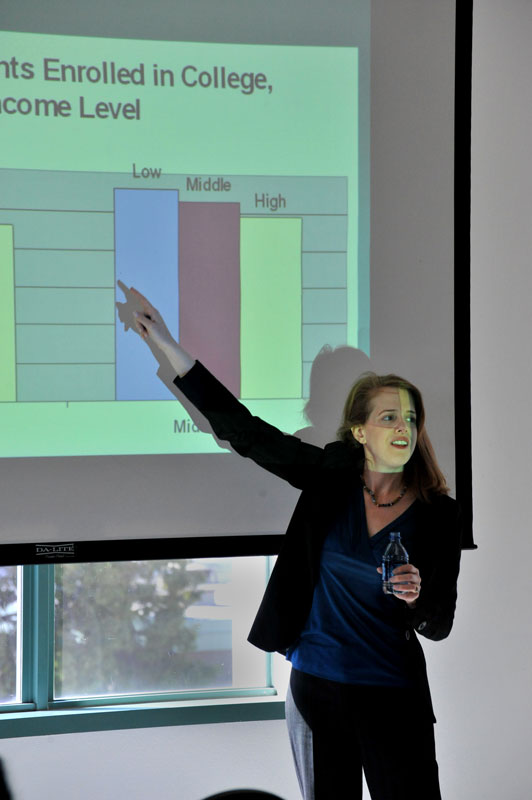
The Gender and Women’s Studies’ Student Association (GWSSA) sponsored a lecture by Linda Sax entitled “The Gender Gap in College: Findings from a National Study and Implications for Campus Practice” on Monday, March 15 in the Flintridge room in the University Student Union. The lecture is part of the “Women’s Herstory Month” calendar of events.
Sax, a professor at UCLA, who teaches courses in research methods, college student development and gender issues, graduated from UC Berkeley where she majored in political economy and earned her doctorate from UCLA in education. The idea to write a book about the “gender gap” across campuses and also do intensive research on the subject, came from her own college experience.
“Up until college I had always been a strong student in math,” Sax said.
Although she was aware of the fact that men are often better at math than women, Sax said she did not realize that this was still an issue.
“As a teenager in the 1980s, I had assumed that the Women’s Movement had indeed leveled the playing field,” Sax said. “I never once thought of math as a ‘male’ domain.”
All this changed when Sax went to college. Her perception of her ability to do well in math and science subjects went down along with her confidence, she said. This got her interested in researching women’s experiences in college math and science.
“Through research, I learned that for women in the math and science fields, the likelihood of persisting in these fields was shaped, just as mine were, by their interactions with faculty, peers and a perception of science as ‘disconnected’ from larger societal concerns,” Sax said.
This lack of confidence comes from the fact that women underrate themselves, she said. After taking the SATs, men gloat about their high scores in math, whereas, women tend to hide them, she said. The same goes for physical and emotional health were women rate themselves lower, she added.
Women are more likely to be first generation college students. Finances and economical well being are a big concern for women too. These are some of the reasons that women are so stressed and find themselves less confident, she said.
“Despite women’s lower confidence and lack of competitiveness, women and men are coming into college with A’s,” Sax said.
Women participate more in volunteer work and clubs while often times it is men who have trouble getting involved with clubs and organizations on campus, she said. This does not seem to be the case at CSUN.
“The A.S. (Associated Students) president is a man,” said Dorian Adams-Wilson, president of GWSSA. “Most of the club presidents are men.”
Our peers and our professors also affect our confidence, Sax said. If our professors give students honest feedback, then we would do better, she said. But, the impact of what goes on in the classroom is not always the same with women and men.
“It depends on the professor,” Adams-Wilson said. “If my professor is on it and confident, then I feel like I need to step it up; to prove that I am worthy. If my professor sucks and doesn’t want to be here, then neither will I.”
Sax said getting down to the bottom line, that two things need to happen.
“Campuses need to be aware and responsive to challenges faced by both genders and engage in campus conversations,” she said.
Her research has been going on for years now showing how much has changed in the past decade, yet this is only the beginning.
“When talking about the differences between women and men, this is just the tip of the iceberg,” Sax said.




